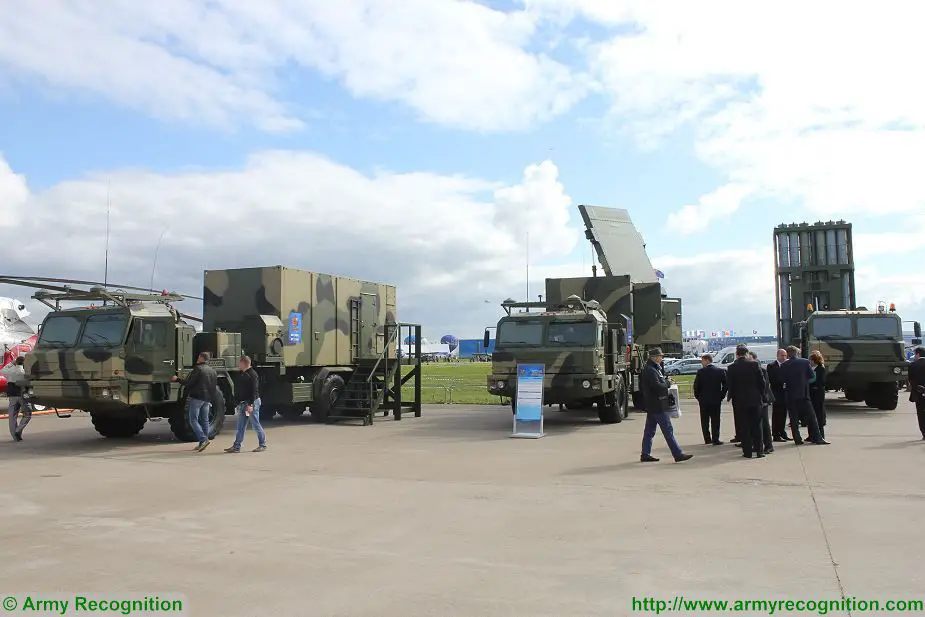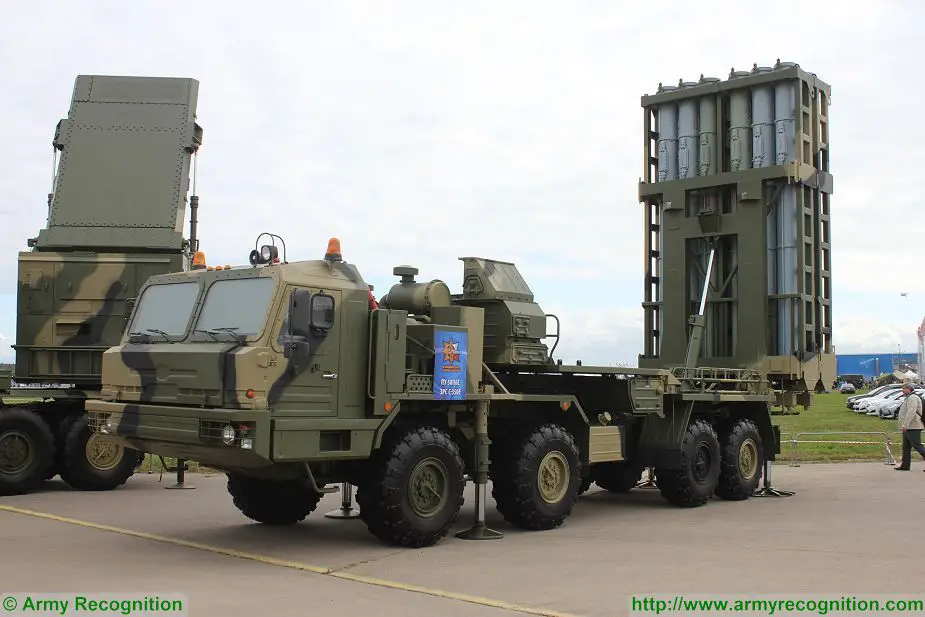Russia ready to offer S-350E missile system to foreign country 13008171
|
Military Defense Industry Technology - S-350E Vityaz
|
|||
|
|
|||
|
|
|||
Russian defense industry ready to offer new S-350E Vityaz air defense missile systems to foreign customers. |
|||
|
Russia will offer to foreign customers already next year the latest air defense S-350E Vityaz systems. They are more compact and cheaper compared to S-400 but enjoy all S-300 capabilities and can engage in close combat without additional defense by Pantsir and Tor armaments. Experts believe that after Vityaz completes tests and becomes operational it will oust Buk missile complexes from foreign markets, Izvestia daily reported.
|
|||
|
|
|||
 Battery of S-350E Vityaz air defense missile system at MAKS 2013, Airshow in Russia. |
|||
|
|
|||
|
The Almaz-Antey Concern presented at the Army-2017 forum the export version of the latest Russian anti-aircraft and anti-missile S-350 Vityaz complex. Its Deputy Director General for foreign economic activities Vyacheslav Dzirkaln said government acceptance tests of the complex are to be completed by the end of the year. At present the concern is accumulating data on combat launches to intercept real targets in various conditions. Test trials of three new anti-aircraft guided missiles for the complex are close to completion as well.
The S-350 borrowed the experience accumulated during the design of the anti-aircraft missile complex RM-SAM for South Korea. In particular, Russian experts obtained access to foreign technologies in hardware components. By the architecture the Korean complex is similar to Vityaz and uses the same radar while missiles and launchers are Korean. In order to utilize the experience a domestic system was created and navymen immediately welcomed its compact size and universal characteristics. The fleet ordered a seaborne anti-aircraft system called Redut for mounting on frigates of the distant sea zone. The ground-based Vityaz is designated for air defense of headquarters, administrative centers and enterprises. It does not fire in motion but its deployment time is only five minutes. It can shoot down aerodynamic targets, aircraft or cruise missiles at a distance of up to 60 kilometers and altitudes from 10 meters to 30 kilometers. The complex shoots down ballistic targets at a distance of up to 30 kilometers and an altitude of up to 25 kilometers. The base-case Vityaz comprises a combat control point, multifunctional 50N6E radar and a launcher. They are mounted on a cross-country wheeled chassis. S-350 advantages include compact size and a big number of missiles (12) on one launcher. There can be up to eight weapons in one squadron. Besides, Vityaz does not need protection as it can fight all air attack means by itself. It has three types of missiles for that - small, medium and intermediate range. The complex can simultaneously target up to 32 missiles (provided the second radar). To ensure safety of the crew complex elements can be deployed at a distance of up to two kilometers from each other. |
|||
|
|
|||
 TEL (Transporter Erector Launcher) of S-350E Vityaz at MAKS 2013, Airshow in Russia. |
|||
|
|
|||
|
The combat crew of S-350E is only three men like with S-400. The operation is fully automatic. The crew only deploys the complex and controls the combat engagement which decreases requirements to the skills of the men.
Vityaz can be of interest to foreign customers as it surpasses S-300 characteristics. One complex actually ensures the creation of an in-depth air defense. Expert Andrei Frolov told Izvestia that after Vityaz completes government acceptance tests and becomes operational it can be a desirable product for foreign customers and will compete with Buk complexes. "Vityaz is a principally new complex and not a modernization of the Soviet-era system. Therefore, the S-350E surpasses even Buk-M3. Besides, it will be cheaper than S-400. All that can attract major foreign buyers," he said. Frolov believes the new complex can be acquired by countries which fear attacks by drones and cruise missiles but have limited finances. "The buyers will get a compact small and medium-range complex with anti-missile defense capabilities. It is important for countries which want to obtain a fully-fledged anti-aircraft and anti-missile defense system without major expenses. Potential buyers include India, Algeria, Armenia, Vietnam and those Middle East countries which cannot afford S-400," he said. The S-350 Vityaz design began in 2007 when there was a need for a new anti-aircraft weapon for the ground forces and the navy. The complex was publicly demonstrated for the first time in 2013. However problems with the design of new missiles postponed the commissioning of the complex, Izvestia said. |
|||


























